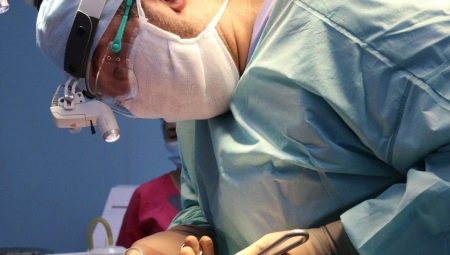Well-groomed appearance is a peculiar visiting card of a modern person. In this case, the person is given priority. If, using cosmetic procedures, the desired result cannot be achieved, you can turn to more radical methods.
Endoscopic facelift is one of the methods of plastic surgery. It has a long-term effect and eliminates pain during surgery.
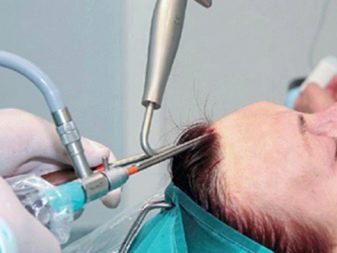

What it is?
Endoscopic face lifting (space lifting) is an innovative low-traumatic method of plastic surgery. It is used to eliminate minor age-related changes on the face. It is possible to use it in combination with non-injection biorevitalization and laser resurfacing. The result after the procedure lasts up to fifteen years, it depends on facial skin care and the patient’s lifestyle.
The operation is carried out using high-tech equipment equipped with optical instruments. This enhances control over all stages of the procedure on the monitor and allows the surgeon to avoid overtension of muscle fibers and tissues.

Benefits
Endoscopic lifting has the following advantages.
- Rejuvenates, gives natural expressiveness to features.
- Carrying out the procedure under anesthesia avoids pain.
- Eliminates long incisions, prevents the innervation of the circular muscles of the eye.
- The aggressiveness of the procedure is reduced due to the use of an endoscope.
- Minimizes blood loss during surgery.
- The absence of scars, scars has a beneficial effect on the psychological state of the patient.
- Shortened postoperative period of up to two days. The rehabilitation period lasts for fourteen days.
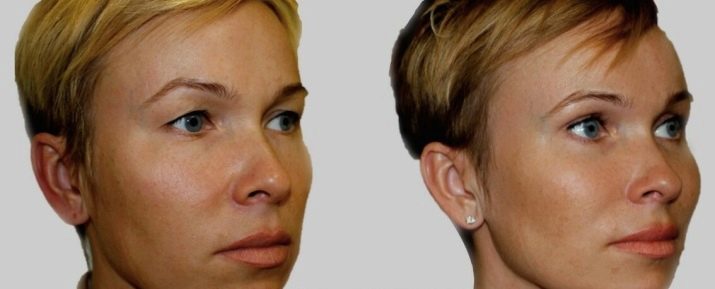
Minimal incisions contribute to the preservation of the lymphatic system, venous and arterial communication. Prevents the formation of edema and large hematomas.
This method solves age-related changes in the complex, combining skin tightening and volume correction. Perhaps a combination with other types of plastic surgery. At the same time blepharoplasty, cheiloplasty, rhinoplasty, laser resurfacing of the skin are performed.
The method is as natural as possible, so its admirers are not only women, but also men. With the help of lifting, it is possible to solve exclusively male problems: physiologically low brows with age give the face a frowning, frown. Timely correction performed solves the problem of drooping eyebrows and fatty hernias on the lower eyelids. This gives the person openness, youth, and is conducive to communication.
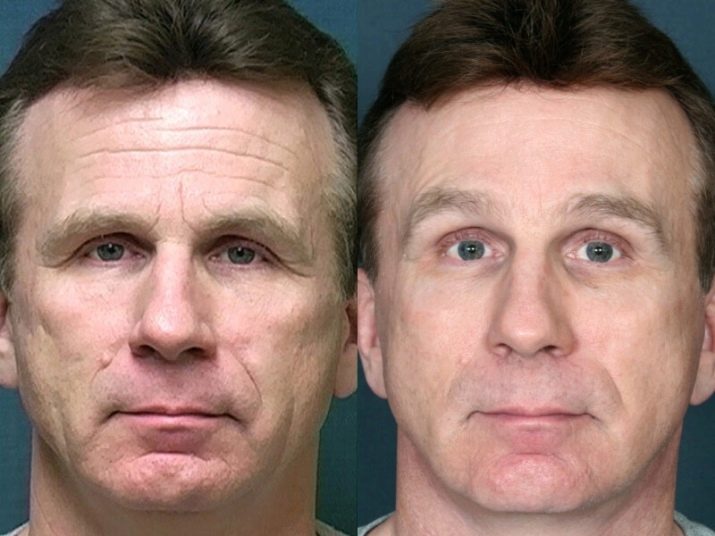
Kinds
The following correction options are distinguished.
- Forehead and eyebrow correction. Deep horizontal creases in the forehead, pronounced wrinkles on the nose, vertical eyebrow wrinkles serve as an indication for the Brow Lift procedure. The effectiveness of the method is proved in the case when it is necessary to raise the outer corner of the palpebral fissure. In this case, a temporal incision is made and the outer corners of the eyes are pulled through it. Establishment of mini-screws in the area of the frontal bones for up to ten days after surgery can be an excellent alternative to blepharoplasty.
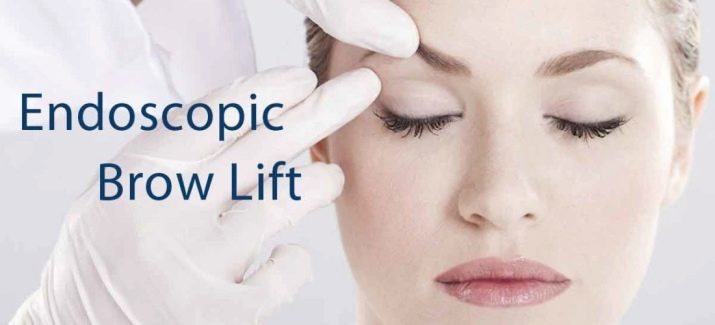
Wearing a compression dressing is recommended for 4-5 days. The period of postoperative recovery after endoscopic tightening of the upper third of the face occurs within 10-15 days. With the help of lifting, you can correct the asymmetric eyebrows hanging over the upper eyelids, and give the facial expression openness.
- Correction of the eyelids and cheeks. Correction of the lower eyelids with the use of small bioplate fixators (endotins) is called Cheek Lift Light. With the help of endotins, the cheekbones, cheeks, lower eyelids are tightened, bags under the eyes and lower eyelid retraction are removed. In a hospital, after the procedure, patients spend no more than a day. The rehabilitation period lasts approximately fourteen days.
- Change in the middle zone of the face. With the help of an endoscopic tightening of the middle zone, you can remove the "widow's folds", a dull look, an expression of grief. Give the correct attractive shape to the contours of the face, align the shape of the eyebrows, raise the corners of the mouth. During the operation, 4-5 small incisions are made on the head and two in the oral cavity.

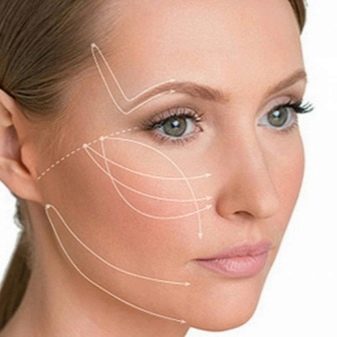
With this type of tightening, you can achieve an organic bulge of the forehead, remodeling the cheekbones. The postoperative period requires careful observance of oral hygiene.
- The lower zone of the face and neck. Modeling the chin, cheeks, lips and neck - Neck Lift. Smoothing age folds on the neck, liposuction of the second chin. Giving an organic line of transition from the neck to the chin, that is, the formation of a "youth angle." Correction of congenital and traumatic defects through the introduction of implants.
This procedure is used in case of age-related sagging skin. Due to the fact that the neck is prone to early aging, this is the most popular procedure in patients.
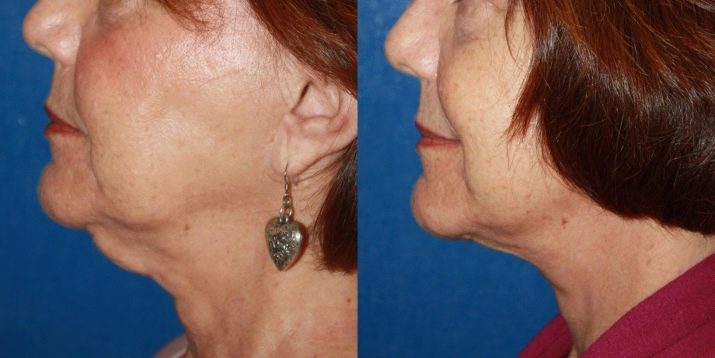
Indications for surgery
The operation is recommended for patients from 35 to 50 years old with well-preserved skin elasticity. Age-related changes in the face in the initial stage can be stopped without resorting to a circular lift.
The procedure is performed to eliminate the following cosmetic defects:
- the presence of creases, drooping, asymmetry of the eyebrows;
- difference in length and shape of eyebrows;
- age-related skin changes;
- violation of the symmetry of the middle zone of the face;
- violation of skin turgor, sagging;
- asymmetry of the face, hollowness of the cheekbones;
- interbrow wrinkles;
- drooping corners of the eyes;
- wrinkles on the forehead;
- "Crow's feet", bags under the eyes;
- pronounced nasolabial folds;
- noticeable overhang of the upper eyelids;
- double chin;
- sagging oval face;
- the presence of pronounced grooves around the lips.

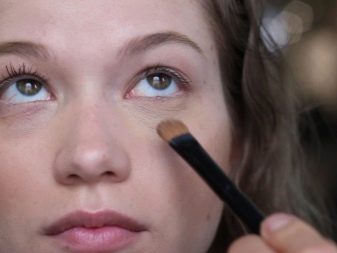
Using the procedure, you can create dimples on the cheeks, give the face an attractive look (beauty), and refine problem areas.
Surveys
The necessary range of clinical and instrumental studies will help to evaluate the true picture of the patient’s health.
Before surgery, it is recommended that the following tests be performed:
- blood type and Rh factor;
- general blood test with leukoformula and platelets;
- blood test for sugar;
- blood coagulation and duration of bleeding;
- analysis for HIV, syphilis, hepatitis C;
- biochemical analysis;
- coagulogram;
- general urine analysis;
- fluorogram or x-ray of the lungs;
- gynecologist examination.

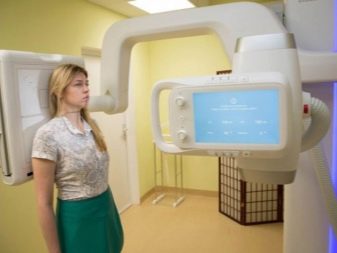
Contraindications
Any invasive intervention involves examination, history taking and identification of possible contraindications.
Contraindications for carrying out endoscopic tightening are:
- hypertension, hypotension;
- increase in body temperature;
- infectious and viral diseases;
- diabetes mellitus, hepatitis, HIV;
- sexually transmitted diseases;
- oncological diseases;
- acute and chronic disorders of the cardiovascular system;
- hormonal disorders, thyroid disease;
- low blood clotting, hemophilia, DIC;
- inflammatory diseases of the oral cavity and nose;
- pregnancy and lactation;
- third degree obesity;
- allergic reactions to anesthesia.
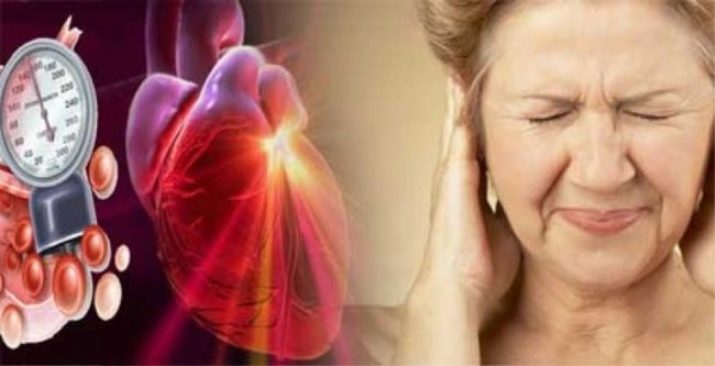
The procedure may be hindered by individual features of the structure of the face, a convex forehead, injuries, violation of the integrity of the skin, deep scars and colloidal scars.
In order to exclude unfortunate consequences, it is not recommended to resort to surgery with high gravity ptosis, severe sagging of the facial skin, pronounced asymmetry. In this case, it is appropriate to conduct a classic circular facelift. In any case, when choosing a method, you should seek the advice of an experienced, qualified specialist.
Complications after endoscopic facelift are rare. The result depends on the professionalism of the surgeon, the individual characteristics of the body, concomitant diseases and the recovery period.
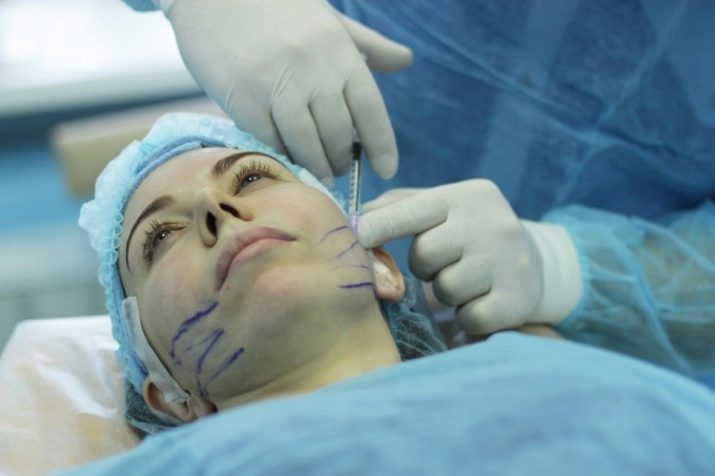
Technology
Before the patient is taken to the operating room, the surgeon marks the incisions.
Classic incisions that are used during endoscopic lifting can be located:
- at the temples;
- above the forehead;
- in the oral cavity on the upper lip;
- in the behind the ear area;
- under the lower jaw.
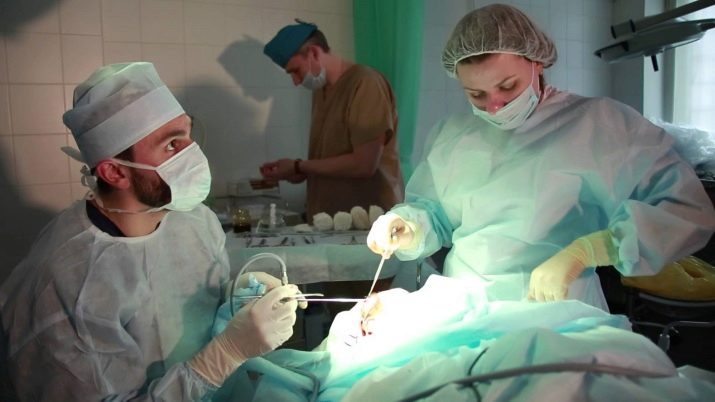
The operation takes place under sterile conditions, the duration depends on the complexity and volume of the procedure, approximately - from 1.5 to 4 hours. In order to avoid pain, the operation is performed under general anesthesia. Depending on the area of the face, the surgeon makes the necessary number of incisions.
The length of the incisions ranges from 1.0 to 1.5 cm. The plastic surgeon performs peeling of the skin from the periosteum and tightens the muscles to the required distance.
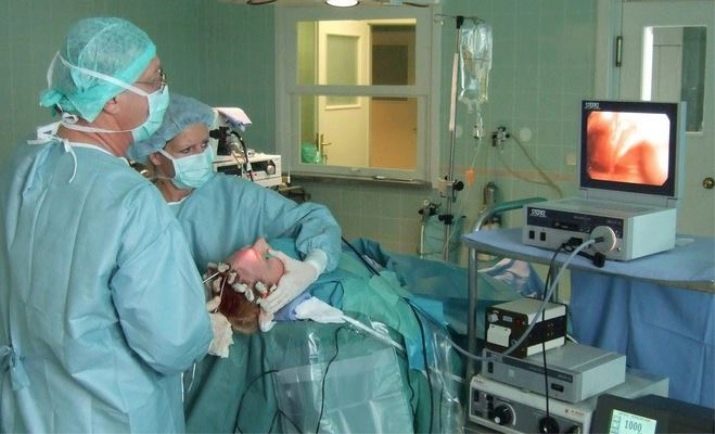
Fixation of muscle fibers is done using suturing or special fibrin glue. Physiological age-related muscle relaxation is eliminated. At the final stage, the stitched seams are processed. A special support bandage is put on for 72 hours.
Complications
The main factor in a successful procedure is compliance with asepsis and antiseptics. Also of great importance is the professionalism of a plastic surgeon. Before the operation, a clinical examination is carried out, an anamnesis is carefully collected, the elasticity of the patient's skin is assessed.
Any surgical intervention involves some complications.
- decreased sensitivity in areas of surgical intervention;
- the formation of hematomas, edema, baldness in places of punctures, scars;
- dizziness, nausea, and vomiting after anesthesia;
- excessive tension of tissues can lead to asymmetry of the face and eyebrows;
- damage to nerves during surgery provokes a violation of facial expressions;
- the presence of postoperative scars and low tissue healing rate;
- the formation of age spots and the cessation of hair growth in the incision area.
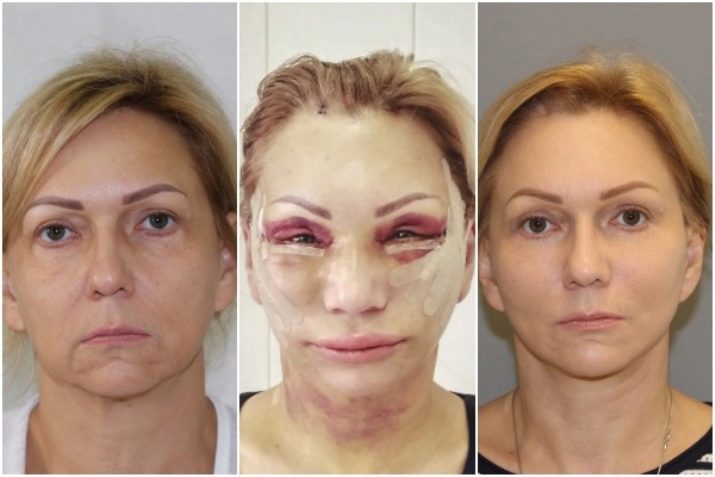
With the correct operation, such complications are temporary.
Recommendations
- Particularly carefully worth approaching the choice of clinic. It is necessary to read reviews about employees, standards, certificates, according to which the institution works. It is recommended that you first familiarize yourself with the price list of the services offered, take an interest in the equipment, materials used and prices.
- Consultation with a surgeon will help determine the indications and contraindications for surgery, the amount of work. The doctor will tell you about the location of the incisions, conduct a computer simulation using pre-made photos. Informs about the spectrum of the alleged tests, the type of anesthesia, the procedure and the features of care in the postoperative period.
- At the consultation, you should ask what options the surgeon sees to solve your problem. Forecasts, deficiencies and possible complications after surgery. Estimated effects, time and possibility of re-intervention.
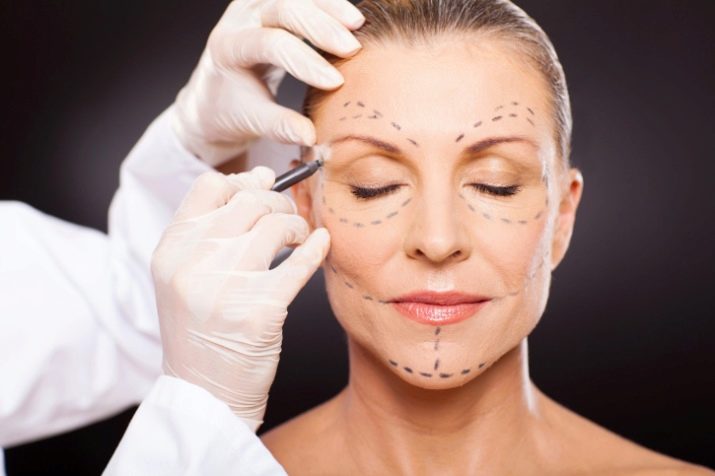
- It is necessary to choose a day for surgery, given the length of the rehabilitation period. Invasive interventions on the eve of critical days are not recommended. This reduces blood coagulation and lengthens the recovery period.
- Preparation for surgery requires compliance with the regime of active work and rest. Proper nutrition, giving up alcohol and smoking will help to adapt the body to a future procedure.
- It is not recommended to visit a solarium, to carry out hair dyeing or peeling procedures. When leaving the clinic, you must have sunglasses with you.

- It is imperative to inform the doctor if changes in the state of health occurred on the eve of the operation. An increase in body temperature, runny nose, diarrhea, an allergic reaction, dermatitis, high blood pressure, fainting, dizziness are a reason to postpone the operation.
- You should not insist on surgery or additional procedures if the specialist considers this unnecessary. For each patient, an individual decision is made corresponding to the indications and state of health.
- On the eve of the operation, it is not recommended to eat and drink. Anesthesia is administered on an empty stomach. Clinic staff should instruct about the time of the procedure and personal hygiene products that you need to bring with you.

Be sure to ask about the conditions of the postoperative period.
The clinic must provide:
- round-the-clock observation of medical personnel;
- full provision of medicines;
- the ability to urgently call personnel at any time.
A separate bathroom is a prerequisite. This prevents communication with other patients of the clinic, reduces contact with the infection. The presence of cable television, the Internet will distract and facilitate a stay in the postoperative period.
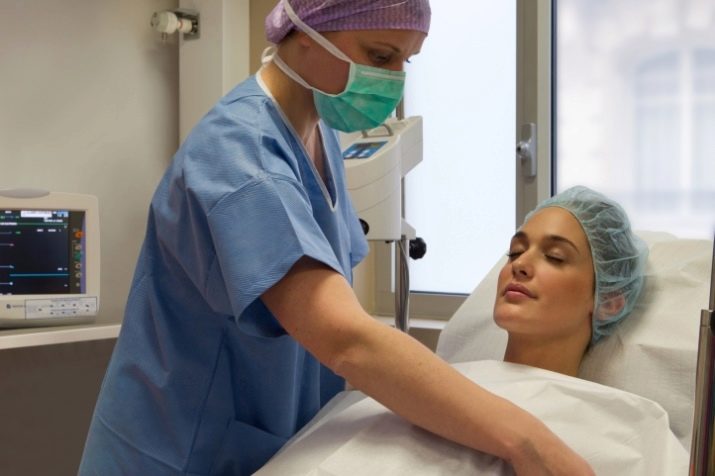
Often, patient reviews after endoscopic lifting are positive. Effective anti-aging effect for a long time is noted. Wrinkles are smoothed, the look becomes clear, open. The skin does not look taut, attracts naturalness.
More often people with age-related changes are decided on the procedure. At a young age, they thus get rid of hereditary problems or correct traces of childhood injuries, accidents.
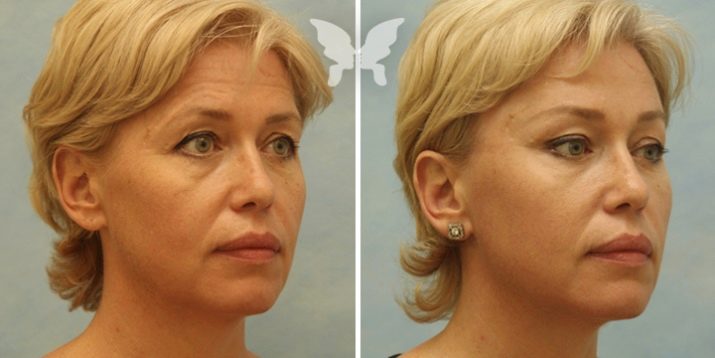
Specialists in this video tell more about spacelifting.
